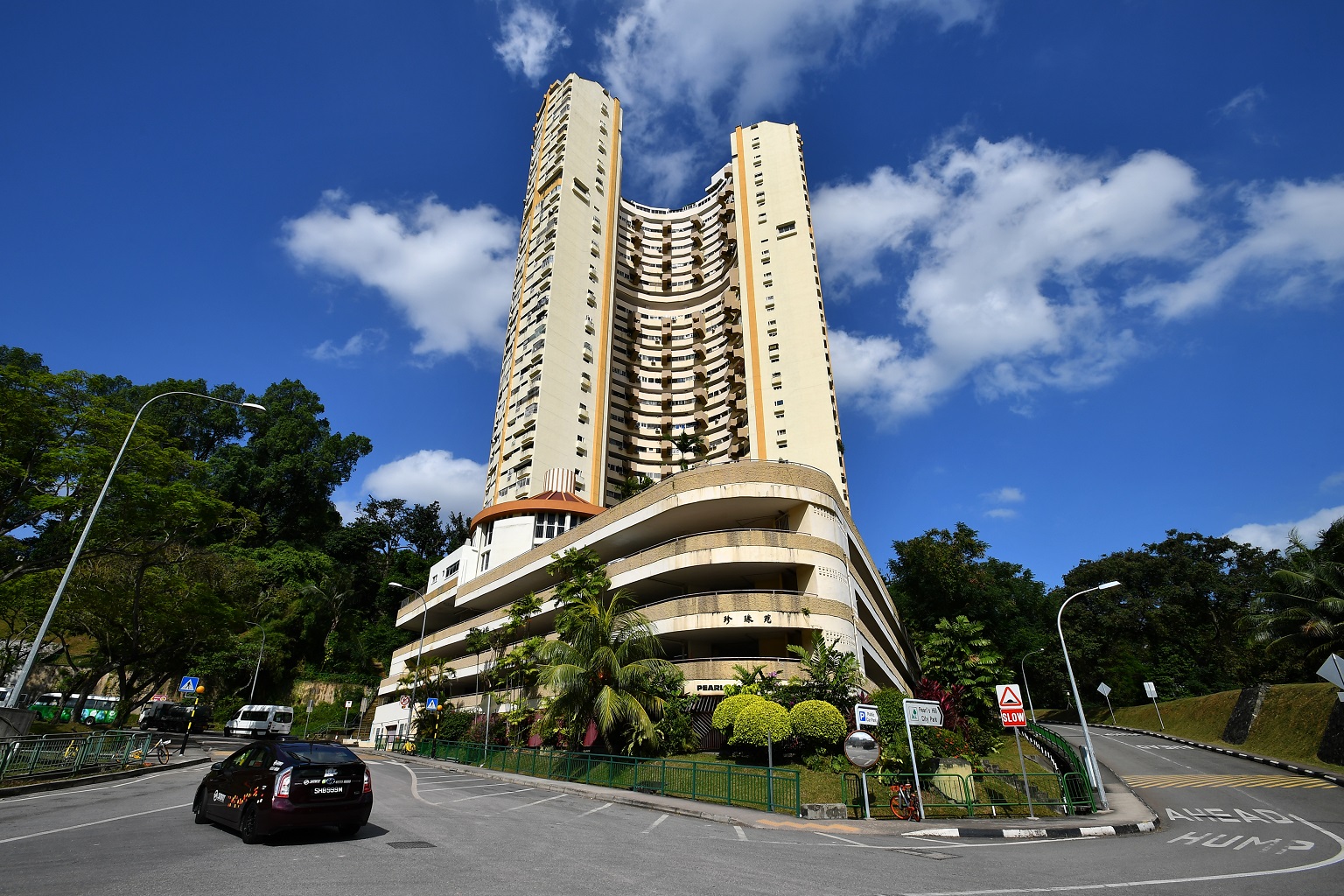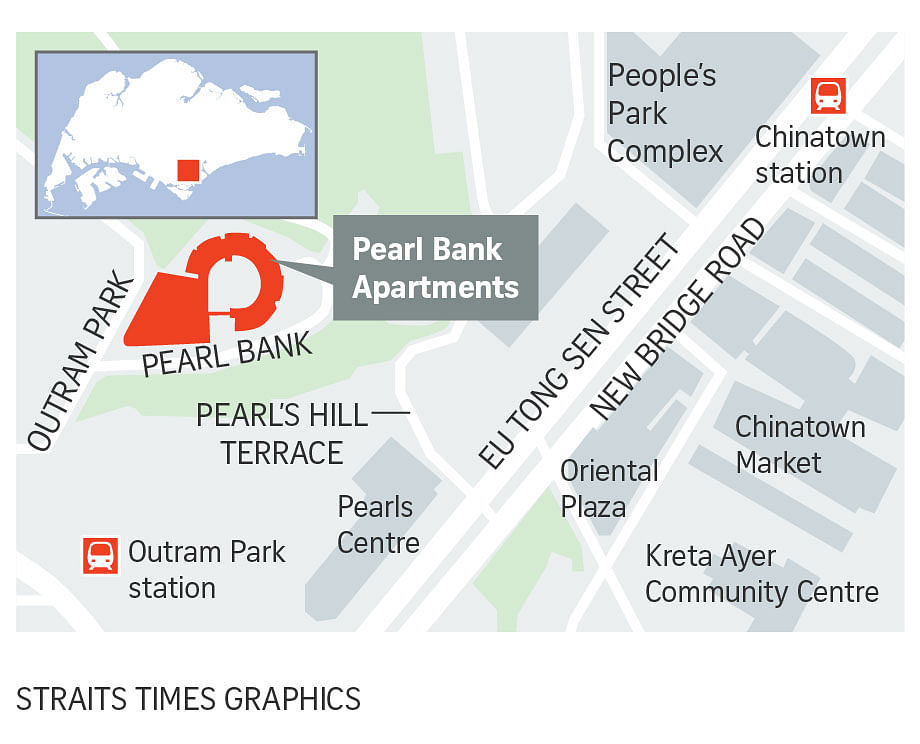Pearl Bank architect leads calls for iconic tower to stay
Sign up now: Get ST's newsletters delivered to your inbox

At 113m, Pearl Bank Apartment was the tallest residential building in Singapore when it was built and had the highest density for a residential development.
ST PHOTO: LIM YAOHUI
Melody Zaccheus
Follow topic:
SINGAPORE - Although the iconic horseshoe-shaped Pearl Bank Apartment block in Outram has been sold, the heritage community and the building's architect are holding on to the slim chance that the striking structure will be retained by developer CapitaLand.
Its architect, Mr Tan Cheng Siong, 81, told The Straits Times on Tuesday (Feb 13) it is his "hope and desire" that the new owner will take the initiative to conserve the tower as part of its planned redevelopment.
He said: "The redevelopment formula does not only have to comprise tearing down a structure, especially if the original building has high architectural and heritage value."
In 2015, more than 90 per cent of residents backed a proposal that would conserve the building, while seeking the Urban Redevelopment Authority's approval for new units to be built on top of the carpark.
The deal fell through as this proposal would have affected the aggregate share value, resulting in a significant dilution of rights of the existing owners.
To be fair to all existing shareholders of the property, the authorities required a resolution by consensus.
Pearl Bank was completed in 1976 to provide homes for the middle class, as well as to renovate, rejuvenate and redevelop the city centre, said Mr Tan.
While low-cost public housing was being launched by the Housing Development Board, Pearl Bank was an opportunity for Mr Tan to demonstrate that communities can also be created in city centres.

Mr Tan said the building's unique "C-shape" is meant to represent community.
"The layout was designed in such a way that the common corridor is exposed to everyone to mix and interact with each other. Good design not only puts a roof over the heads of residents but nurtures the value of community. This is something the authorities and developers have also grown to value."
Conservation can be voluntary. Owners of private buildings can offer their buildings for conservation subject to the URA studying the structure to see if there is merit for the building to be conserved.
The URA also identifies and studies buildings for conservation and will seek the support of owners of privately owned buildings.
The URA had said previously that there are merits for Pearl Bank's conservation.

At 113m, it was the tallest residential building in Singapore when it was built and had the highest density for a residential development.
It also set standards for later condominium developments on provision of communal amenities such as common areas, clubhouses and shops.
Singapore University of Technology and Design's Dr Yeo Kang Shua, an architectural conservation specialist, said the building appeals to the growing number of home owners who are looking to live in buildings with unique architecture and design, as well as a sense of history.
He hopes that the developer will pleasantly surprise the community by conserving the tower. As the block towers over the area, Dr Yeo added that Pearl Bank serves as an iconic and visual signpost.
Experts added that with current building codes and market forces, such a design is unlikely to be encountered again.
Principal architect at Chang Architects, Mr Chang Yong Ter, said agencies and developers should look into selectively conserving key sites as they serve as milestones of the island's evolving housing strategies.
He added: "Pearl Bank was ahead of its time; even today it is just as modern, because it has a sense of timelessness."
A CapitaLand spokesman said the company, which is headquartered in Singapore, has an "unrivalled track record in building city-defining landmarks". She said it has also "successfully redeveloped" historically significant sites such as Clarke Quay and RiverGate at Robertson Quay.
"We are confident that our expertise in developing world-class architectural masterpieces which are well connected to transport hubs will put us in a good position to reinvigorate this plum site into a gleaming icon for Singapore.
"We look forward to creating another landmark in Singapore, capturing the heritage elements and blending it with modern aesthetics to reflect the rich, multifaceted culture of Chinatown."

